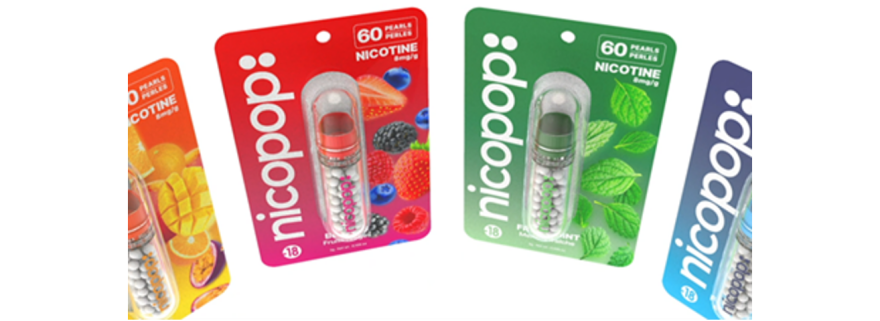Summary
Cabinet has approved in principle the sale of oral tobacco products (e.g. snus) and oral nicotine products (e.g. pouches) in Aotearoa New Zealand. These products could potentially help people to stop smoking by providing a source of nicotine that is likely to be less physically harmful than cigarettes. However, evidence regarding these products’ efficacy as smoking cessation aids is limited, especially when compared with the quality of evidence supporting the use and efficacy of Medsafe-approved nicotine replacement therapy (NRT), which is already widely available.
Introduction
Nicotine is the main component of cigarettes that makes them addictive. Providing an alternative source of nicotine for the short-term relief of withdrawal symptoms or as a longer-term replacement source of nicotine may help people to stop smoking. Medsafe-approved nicotine replacement therapy (NRT) products, are widely available in Aotearoa New Zealand (including nicotine lozenges and gum) and provide nicotine in a less harmful form than cigarette smoking. Cabinet has in principle approved introducing oral tobacco products (e.g. snus) and oral nicotine products (e.g. nicotine pouches), as alternative products that potentially may help people stop smoking. These products are not approved by Medsafe as smoking cessation aids. In this Briefing, we investigate the evidence for introducing these products to NZ.
Snus and smoking cessation
Snus, a small pouch that contains tobacco, is widely used in Sweden [Figure 1]. People place the pouch between their gum and lip, and nicotine is absorbed through the lining of the mouth. While snus has been associated with increased cancer risk (e.g. oesophageal and pancreatic cancer), it is likely to be less physically harmful than cigarettes. 1 2 However, evidence for the efficacy of snus as a smoking cessation aid is mixed. In 2023, meta analyses of research—analysing several previous studies in combination—found that the evidence supporting snus as a smoking cessation aid was ‘weak’3 (see Box 1 for detail).
Box 1: Evidence for snus as a smoking cessation aid
In 2023, meta-analyses of randomised controlled trials found snus did not increase smoking cessation compared with control conditions (placebo or no product, risk ratio (RR) 1.33 [95% CI 0.71 to 2.47]) or nicotine replacement therapy (NRT) (RR 0.62 [95% CI 0.27 to 1.41]).3 A meta-analysis of longitudinal observational data in the same publication found that snus use was associated with an increased likelihood of smoking cessation compared to control (RR 1.38 [95% CI 1.05 to 1.82]) but these findings were considered to be at high risk of bias due to lack of adjustment for confounding.3 The authors concluded the evidence supporting snus as a smoking cessation aid was ‘weak’.
Figure 1: Snus
Oral nicotine products and smoking cessation
Oral nicotine products may take the form of pouches or dissolvable ‘pearls’ [Figure 2]. They contain either nicotine extracted from tobacco or synthetic nicotine. Because oral nicotine products do not contain tobacco, they are likely to be less physically harmful than cigarettes or snus. However, this does not mean they are risk-free. Several experts have called for further research into their long-term health effects, including their potential to cause nicotine addiction and negatively affect oral health. 4 5 Tobacco companies produce and market several brands (e.g., Swedish Match, a Philip Morris International subsidiary, produces ZYN).
Figure 2: Nicotine pearls (top) and pouches (bottom)
There is limited evidence examining oral nicotine products’ efficacy as smoking cessation aids. Studies have demonstrated the potential for nicotine pouches to relieve nicotine withdrawal symptoms. 6 7 However, it is uncertain as to whether nicotine pouches help people to stop smoking, because there are no adequately sized trials to test this (see Box 2 for detail).
Box 2: Evidence for nicotine pouches as a smoking cessation aid
There are no adequately powered randomised controlled trials to investigate whether the use of nicotine pouches increases the likelihood of smoking cessation.7 8 The most recent trial, published earlier this year, was a pilot study with a very small sample size (45 participants randomised, 18 given nicotine pouches), with an extremely short follow-up period for the primary outcome (8 weeks), high loss to follow-up (>25%), and primarily designed to investigate impacts on cigarettes smoked per day, rather than smoking cessation.8 As noted by the study authors, larger studies with longer follow up are needed before firm conclusions can be drawn.
Evidence for the use of nicotine replacement therapy (NRT) in smoking cessation
Meta-analyses based on high quality randomised control trial data from over 100 trials have consistently concluded that NRT products support smoking cessation compared with placebo/control. 9 10 This finding highlights the difference in evidence strength supporting NRT use for smoking cessation, compared to the evidence supporting oral tobacco and oral nicotine product use.
Future research
More research is needed to understand the use of oral tobacco and oral nicotine products in smoking cessation, including studies conducted independently of the tobacco industry. Currently many studies of novel nicotine products have industry funding or links. 11-13 Additionally, possible unintended adverse outcomes need consideration, such as the potential for uptake of oral nicotine and oral tobacco products by people who do not smoke (especially youth/rangatahi, given the youth-oriented marketing of these products), and the potential for poly-use (where these products are used alongside continued cigarette smoking).
Conclusion
Overall, it is currently unclear whether oral tobacco and oral nicotine products improve the likelihood of smoking cessation. Additionally, there is potential for these products to have unintended adverse impacts, such as uptake amongst people who do not smoke. In contrast, there is high-quality evidence to support the use of NRT, which is already widely available. We call on policymakers to critically assess the evidence available and consider whether it is sufficient to support a policy decision to introduce these products to Aotearoa New Zealand.
What this Briefing adds
- Although oral tobacco and oral nicotine products are not legally able to be sold in NZ, Cabinet approval in principle means we will likely see them made available.
- There is a need for further research to investigate whether these products are effective smoking cessation aids, particularly whether they are more effective than Medsafe-approved products, such as nicotine replacement therapy (NRT) products, which are already widely available in NZ.
- Many studies of novel nicotine products have industry funding or links, therefore it is vital that the potential biases from this research are identified.
Implications for policy
- More robust and independent evidence is needed before oral tobacco and oral nicotine products are classified as smoking cessation aids.
- Policymakers should only expand the nicotine marketplace when they have robust independent evidence documenting the safety and effectiveness of these products as smoking cessation aids.
Authors details
Dr Janine Nip, ASPIRE Aotearoa Research Centre, and Department of Public Health, University of Otago Wellington
Dr Jude Ball, ASPIRE Aotearoa Research Centre, and Department of Public Health, University of Otago Wellington
Prof Janet Hoek, Co-Director of ASPIRE Aotearoa Research Centre, and Department of Public Health, University of Otago Wellington
Prof Richard Edwards, Co-Director of ASPIRE Aotearoa Research Centre, and Department of Public Health, University of Otago Wellington
Dr Michaela Pettie, ASPIRE Aotearoa Research Centre, and Department of Public Health, University of Otago Wellington
Melissa-Jade Gregan, ASPIRE Aotearoa Research Centre, and Department of Public Health, University of Otago Wellington




